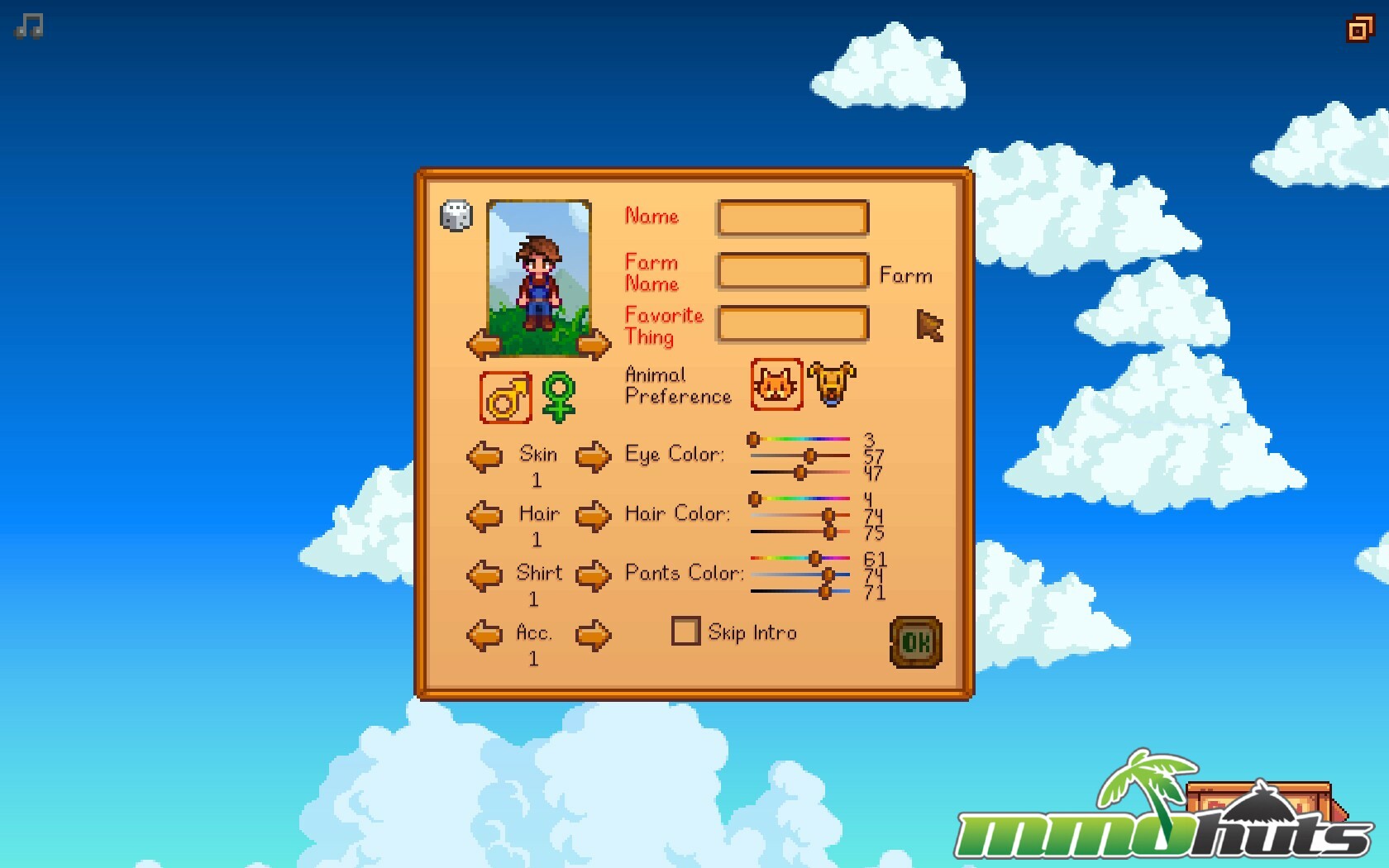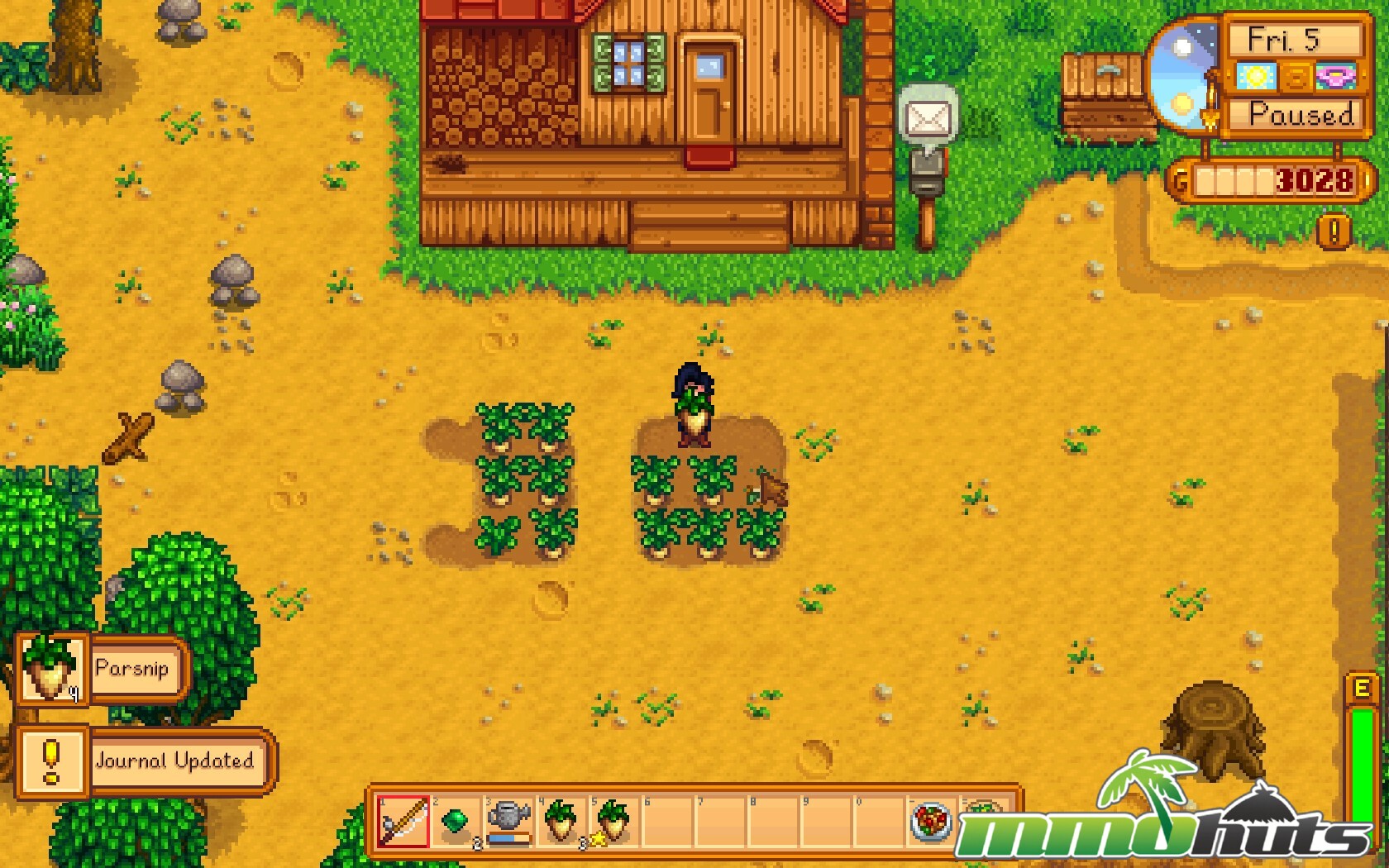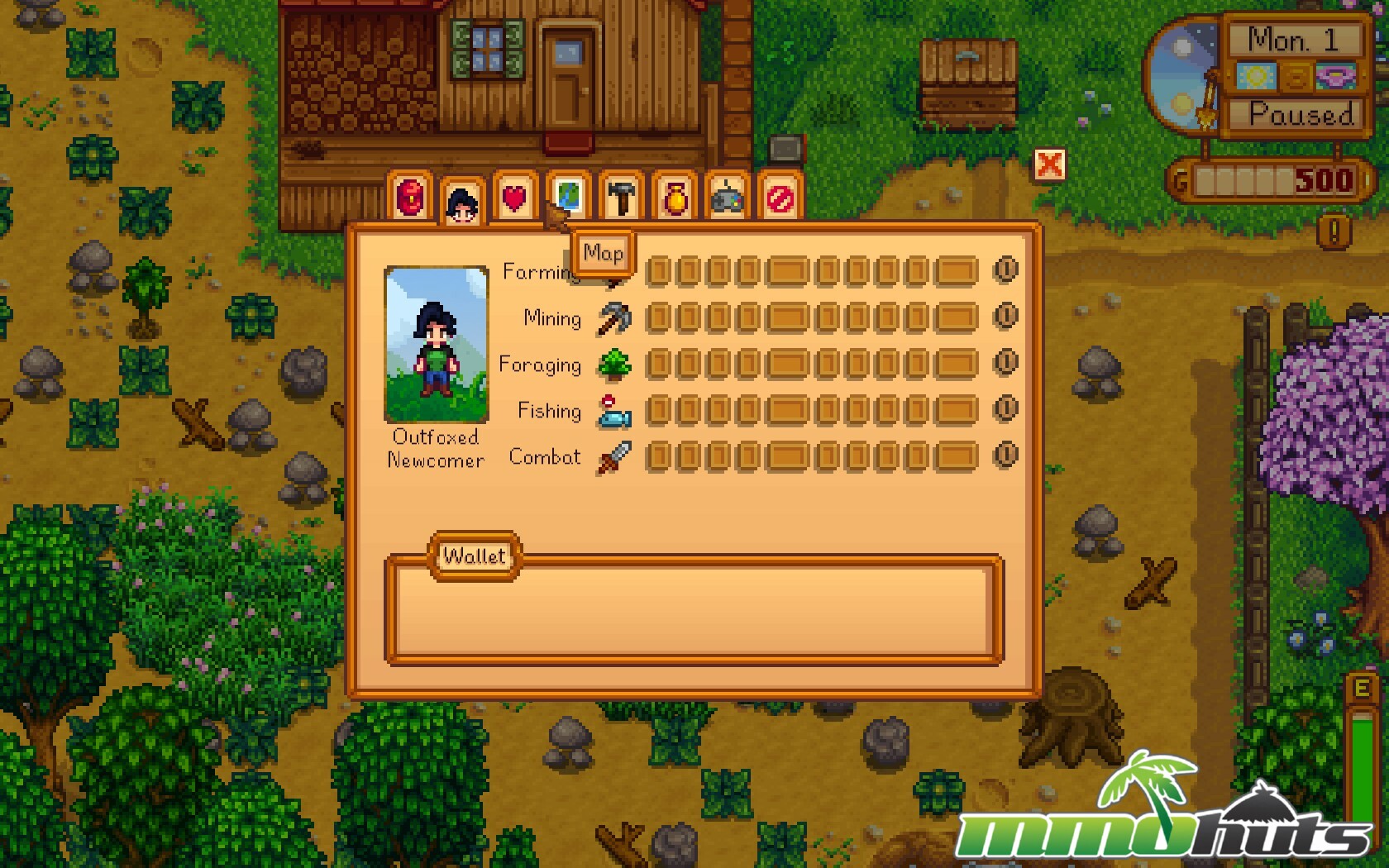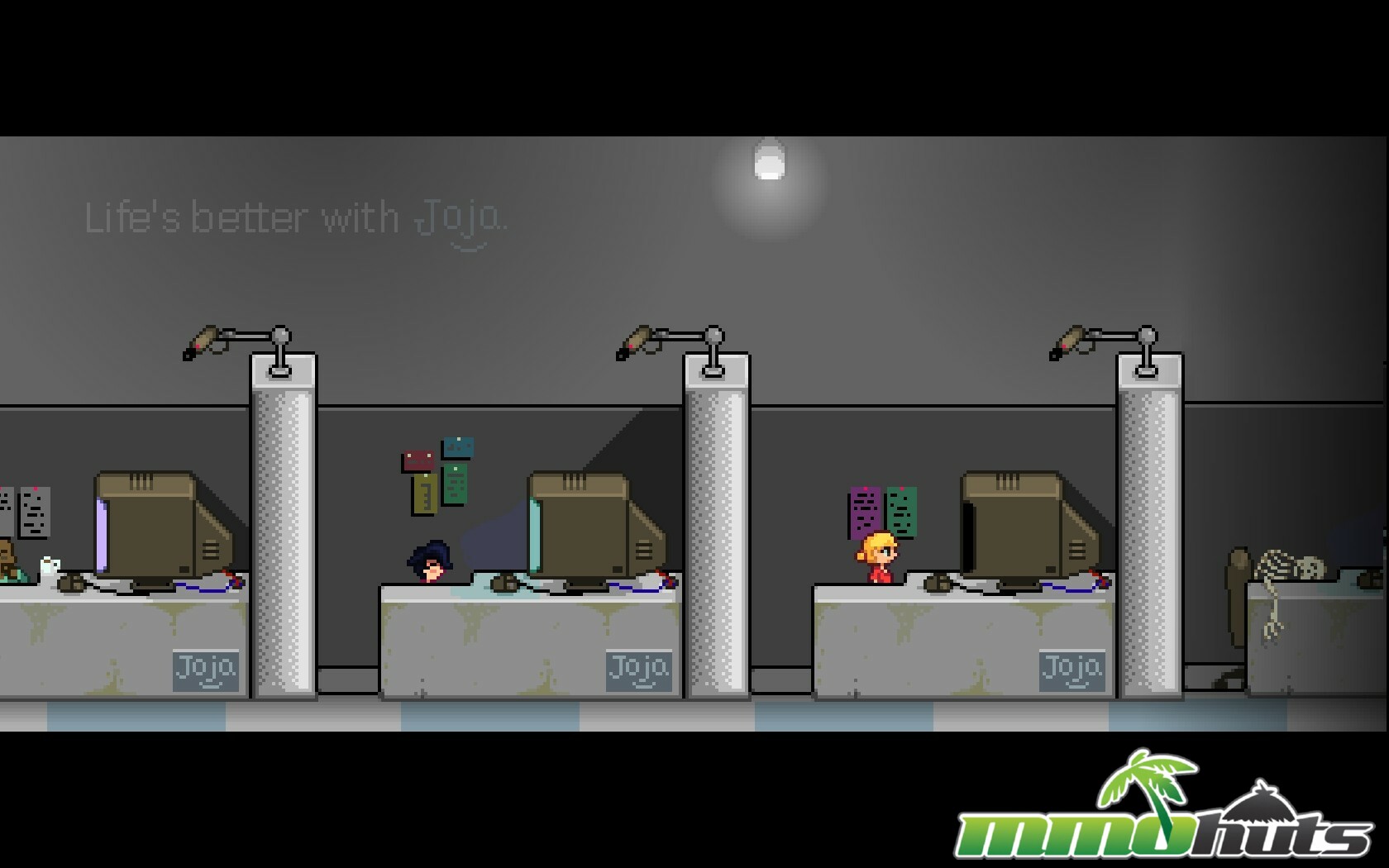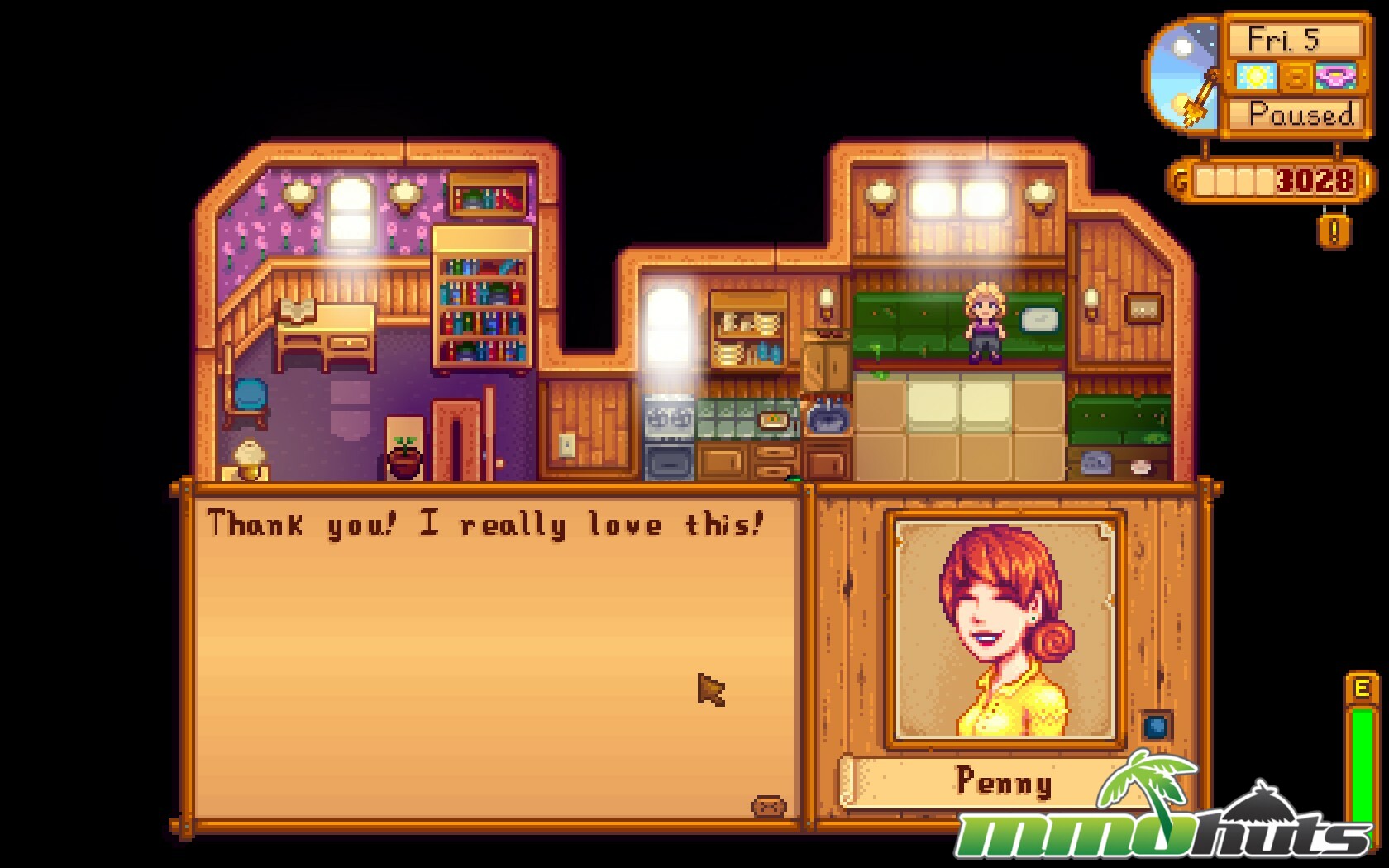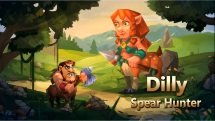Stardew Valley Game Review
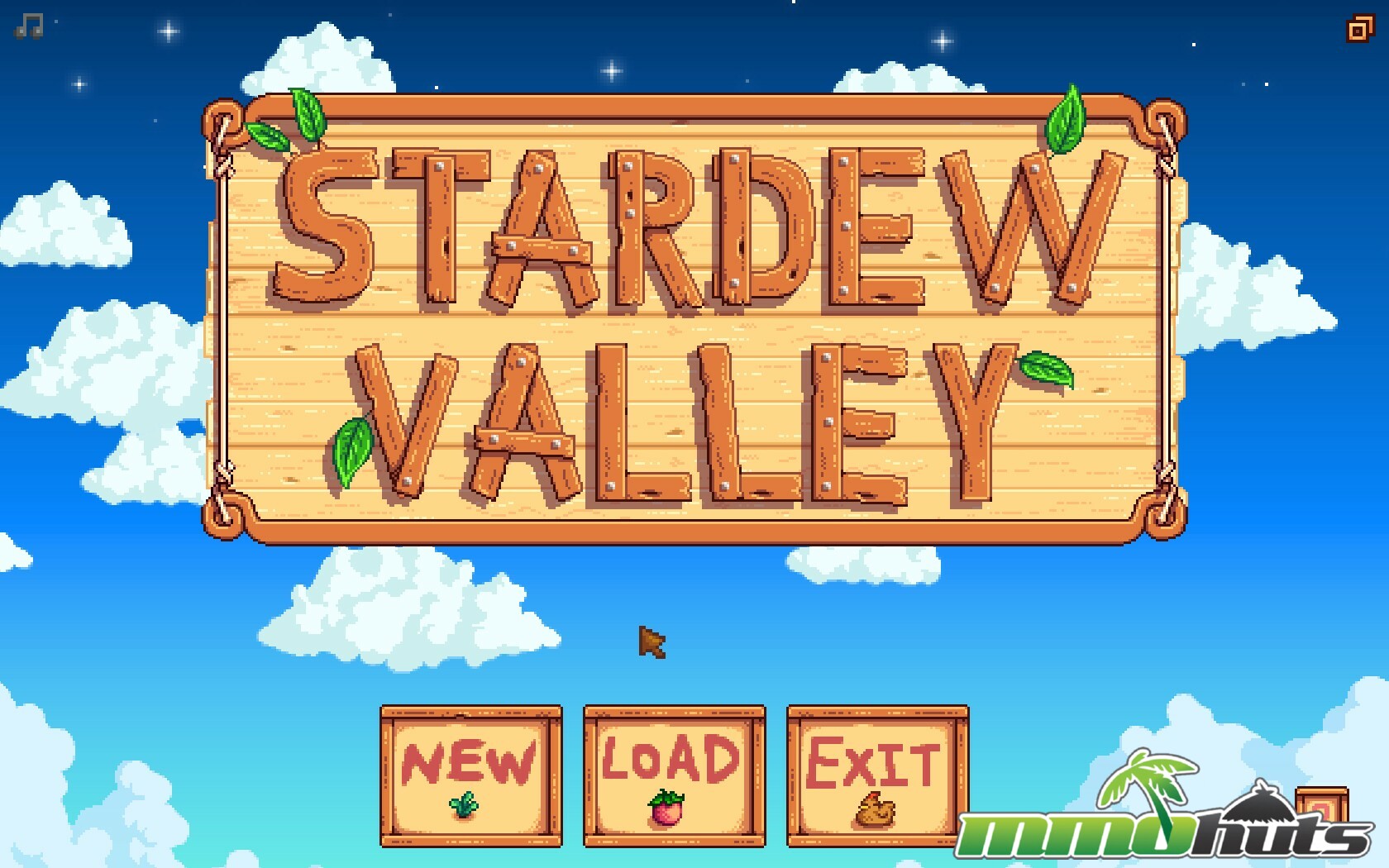
There’s always been an unexplained charm to the Harvest Moon series. Perhaps it lets us live a more simple life, albeit in video game form. The problem is the game has only ever been for Nintendo consoles. Seeing a demand, Concerned Ape developed Stardew Valley all on his lonesome over the course of about four years. A one man team, you say? That can’t possibly be quality, you might cry. So, how exactly does Stardew Valley, with its 16-bit sprites, hold up in an era of blockbuster AAA titles?
Farmin’ Ain’t Easy
When you first create a character in Stardew Valley, it seems so generic. Where are the sliders? Where are any advanced options? How can I possibly create a unique character with such a limited selection of choices? Then you see how many options there are. Tons of skin tones (including the wacky and wild), hair styles, and shirt choices are available. Hair color, eye color, and pants color can all be edited on a simple Red-Blue-Yellow scale complete with contrast to create as light or as dark a color as you want. In fact, the game boasts 24 skin tones, 32 hair styles, 112 shirts, and 20 accessories to choose from, which is astounding for ANY game, let alone one developed by a single person.
You can name yourself anything you choose, barring certain names that belong to NPCs in the game. Additionally, you can name your farm anything you choose, and select what your favorite thing ever is. Be careful with that last one; you may find the references to your favorite thing will make you cry if you choose something silly (whether out of sadness or laughter, however …). Choose your gender and whether you’d prefer a cat or a dog, and you’re off to the crippling world of office work … wait, what?
Plant Crops, ???, Profit!
Once you’ve gone through the initial story sequence, you’re free to move about the game. There’s a very rudimentary tutorial that appears in the upper left on your first real day of playing. WASD to move about the world, left-click to use your selected item, right click to perform various other actions, and Escape to pull up the menu. There are a variety of keyboard shortcuts as well, and you can play the entirety of the game using the keyboard if you so choose. There are also controller options should you prefer to play using one. While some prefer the controller exclusively, I’ve found that it has a few limitations, such as tool use and hotbar selection, that are awkward compared to the mouse and keyboard combo.
You are also given a housewarming gift of 15 parsnip seeds to start your farming adventures if you so choose. Note, however, I said if you so choose. In fact, that’s one of the glorious things about Stardew Valley: you’re not forced to do anything. Want to sleep every day instead of accomplishing anything? Go for it. Feel like just wandering around the map to see what you can find? Absolutely! Head into town every day only to chat with the townsfolk because you’re feeling particularly social? Feel free! It’s that freedom to do whatever you feel like that makes Stardew Valley so special. It’s a casual game without the connotations that “casual game” usually conveys, a sandbox game that doesn’t feel too “hardcore”.
The Five ‘Fs’ of Stardew
If you do decide to start farming, it’s going to be a little rough. You see, your farm hasn’t been lived in for a long time. Trees, weeds, rocks, and bushes have overrun your property. So it’s up to you to clear the land to make space for your grand design. Thankfully, the game gives you an axe to chop down trees and logs, a pick to bust open rocks, a scythe to clear out brush and grass, a hoe to till the soil, and a watering can to ensure your crops stay hydrated. However, how much you can accomplish in a given day is governed by your energy, which is located in a convenient bar on the bottom right of the screen. At first, chopping and tilling and watering is going to take up quite a bit of energy — you’re starting out as a city slicker with no knowledge of farming outside of the basics.
Fishing is its own little mini-game.
This leads us to the “Five F’s”: Farming, Foraging, Fishing, Fighting (combat), and … um, Finesse Mining? Each time you chop down a tree or sell an item you find in the wild, you get more skill at foraging, which reduces your energy drain while swinging an axe. Break open enough rocks, and you learn to use your pickaxe better. Grow, nurture, and sell crops and animal products, and your farming level increases, meaning your ability to hoe the ground and water your crops improves. Catch fish to help you learn to fish better. Defeat creatures to learn how to defeat creatures and improve your defenses against them. It works eerily similar to real life: the more you do something, the easier it becomes and the better you get at it.
Specializing for Fun and Profit
When you advance to level five in a skill, you get your first branching path option. Each skill gives you two different selections to take, which can be as simple as increased money from items related to that skill, to something a bit more complex such as reducing or changing the items required in crafting. At level ten, you’re presented with yet another set of two skills, which depend on what selection you made at level five. Thankfully, you can also raise each and every skill up to level ten, so feel free to engage in any activity you choose. You won’t be hindered on your ability to farm if you decide to work on your combat skills, for example.
You can also upgrade your tools at the blacksmith to make them more efficient overall. Not only is this a convenience, but it can have even more effects depending on the tool upgraded. Watering cans and hoes, for example, can water/till multiple spaces if the use button is held down a short period of time. Better axes and picks require less strikes to break their respective objects. For the most part, you can stick with your basic tools, but the energy cost will hurt, and there are a few things that will require the upgraded tools to break down.
Making a Living by Making a Living
There should be no surprise that the game also features a fully-fledged crafting system. Thankfully, much like the rest of the game, it’s incredibly simple: select the item in the crafting menu, and if you’ve the requisite items on hand, you make the item. You don’t start with much in the way of what you can craft at first, but you gain plenty more just by leveling your other skills.
Crafted items also have varying degrees of use. Paths, for example, are used to add a bit of decoration to your farm, while fences are used to keep animals in, and grass out (or in!). Others even have multiples uses, such as the keg and preserves jar. There are almost 100 items you can craft in the game, so have fun designing and creating a farm only you could dream of.
Crafting also includes cooking, which is not considered a skill of its own. Once your house is upgraded, you can cook anything you have a recipe and ingredients for. Recipes are unlocked in various ways, from TV shows to friendships with NPCs. The food itself is rather useful – while perhaps not profitable, the food carries serious health, energy, and even skill boosts.
Who Runs this Town, Anyway?
One of the key parts of the game’s progression, besides your own character’s skills, is town development. While this isn’t Animal Crossing and you’re not the Mayor, you have the unique capability to change and shape the town and the areas around it. Early on, you’ll be given a choice: side with the townspeople and their ‘simple’ life, or side with the ‘evil’ corporation Joja. Your choice will impact whether the town’s community center is rebuilt or destroyed.
Whichever side you choose, you will be able to unlock additional areas and perks in the town, either through ‘bundles’ of goods you earn through hard work, or through gold which you also earn through hard work. Both options are mostly the same, but with minor differences. Each improvement you unlock will offer some good benefits, including the hot springs where you can restore your energy for free.
You’re Not Supposed to Eat That!
Remember, you’re also not alone in the world of Stardew Valley. Each of the villagers can be talked to, and many have some interesting (and often sad) backstories to them. Every single villager has a schedule, too. This makes the town, however small it is, feel that much more alive. With two exceptions, every single NPC can also be given gifts to raise their affection. Raising affection to certain levels unlocks various cutscenes that provide the aforementioned backstories and various views into what goes on in their lives when you’re not around. Some NPCs will even send you recipes in the mail.
There are also five men and five women you can attempt to romance in Stardew Valley. The game conveniently tells you which they are by appending (single) next to their name in your menu screen. When you raise their affection up high enough, you can even ask them to marry you and move into the farm. Once there, they will randomly do tasks such as take care of animals, water your crops, or even make you breakfast. Keep in mind, you may romance any of them regardless of gender, so you don’t have to pine wistfully for someone you cannot have.
Achievement Hunter
There’s still more to Stardew Valley, and it’s hard to cover everything equally. But if you love collecting and achievements, there’s systems for that too. Achievements are sparse, but momentous, and each rewards a new hat at a secret shop. It’s a game on Steam, of course it needs a hat collection!
Rocks, gems, strange dolls. The usual museum fare.
You can also collect artifacts and books, hidden items found randomly as you explore and work your farm. These can be turned into the museum and put on display, even rearranged. The more you turn in, the more rewards you unlock.
Finally, you can also customize your own home in addition to your farm. You can decorate the space with wallpaper, flooring, and items. This feature does lack some features I’d like, such as the ability to rotate items, but it still lets you get a little more settled in to your new life as a farmer.
It’s not much, but it’s home.
Final Thoughts: Excellent (5/5)
It might just be me, but I can’t seem to put the game down. It gives a nice blend of simple, no-stress gameplay with that addictive, one-more-day-and-I’m done style. Stardew gives you plenty to do, but you’re never rushed to do it. In fact, the game has an ending, of sorts, which then lets you continue on your farm as long as you want to anyway. The colorful world, the way it changes with the seasons, and many other, little touches (like petals floating on the breeze in spring) just make the world vibrant and alive. The NPCs having lives of their own certainly helps that living world feeling as well.
One of the biggest things to me is how much the developer cares about his game. He’s even gone so far as to fix people’s corrupted saves manually after a bug fix caused the problem in the first place. It’s rare and refreshing to see such a level of care and commitment in game development these days. Stardew Valley is an experience that has taken hundreds of thousands of people by surprise — myself included. Its charm may be exactly what you’re looking for too. And if the developer’s enthusiasm holds out, we might even see co-op play in it in a future update!
Full Gameplay Image Gallery
Articles You May Enjoy
- Project Chasers: New cross-platform action game hits Indiegogo
- Game developers Amit Ravid and Natanel Yosef are actively seeking further support to complete their project – a high-speed, multiplayer chas...
- E3 2016 For Honor Campaign Preview
- Ironically after missing my chance to experience the 5v5 head to head battles at so many conventions, I now found myself at the controls.


